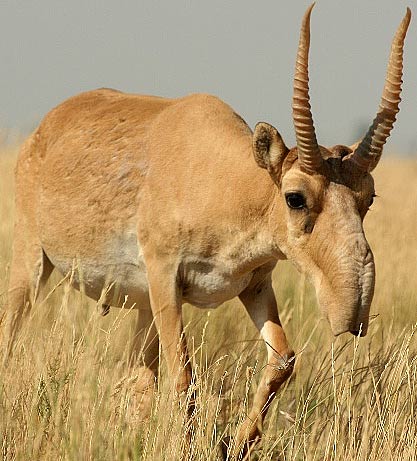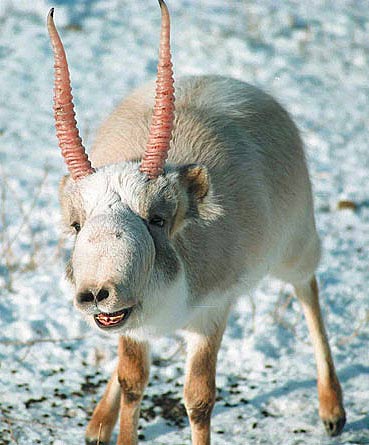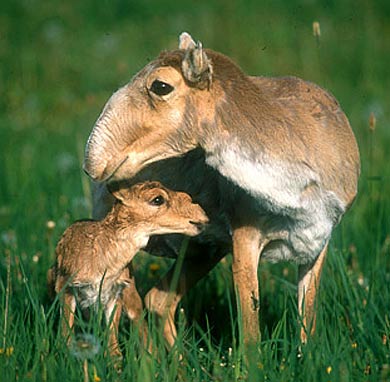Saiga Antelope – Asian Big-Snout Steppe Wanderer

With buggy eyes and a peculiar snout the saiga antelope has a face only a mother could love. This fleshy, humped nose is well suited for the cold and dusty environment. They used to inhabit vast portions of the northern Eurasian continent and North America as well but they have been put on the critically endangered species list because there are not many left in the world. Nowadays they are mainly found in Mongolia and Kazakhstan.

They are animals that stick together in herds and are known to eat many different types of plants. One strange thing is that they can eat poisonous plants that other animals would turn their heads away from. They will frolic in the rivers and sometimes travel many miles but they don’t like to climb steep and rocky hills. They prefer this flat territory so they can run (on their skinny legs) from danger. They have mostly white winter coats. They mate usually during the fall months and the females give birth in the spring time. They have been known to give birth to either one or two fouls as a time.

One of the things that contributes to their being on the endangered species list is the fact that they only live six to ten years. This does not give them a long time to have the opportunity to mate and reproduce. As with most animals, the males tend to be larger and they are the ones that carry horns on their heads. Unfortunately for them, their nice, waxy, pink, ribbed horns are the other factor that is probably the biggest cause of the decline in their numbers. This is because hunting for their horns for use as Chinese medicine is common although it has been illegal for quite some time. The population has declined almost ninety five percent in fifteen years. On top of that, the poor beasts where struck with an infectious disease plague that took out a big portion of some of the herds a few years ago.

